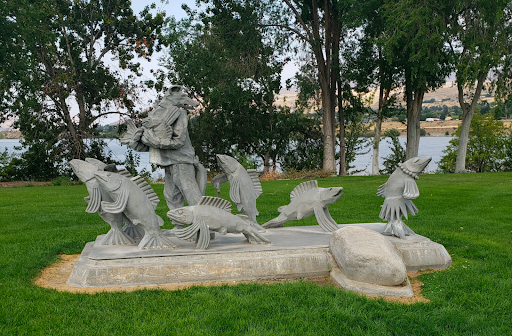Eco-cultural criteria for climate refugia mapping of resources of value to Tribal communities


During 2021-22, scientists from the USFS Pacific Southwest Research Station, Blue Forest, UC Davis, and UC Santa Barbara partnered on a project to begin incorporating Indigenous Peoples’ knowledge into a framework for identifying, prioritizing, and managing regions expected to serve as climate refugia.
Report by: Micah Elias, Kira Hefty, Kirsten Hodgson, Jonathan Long, Pat Manley, Phil Saksa, Mark Schwartz, Jen Smith, Hanna Weyland
Blog by: Phil Saksa, PhD and Saraya Hamidi
During 2021-22, scientists from the USFS Pacific Southwest Research Station, Blue Forest, UC Davis, and UC Santa Barbara partnered on a project to begin incorporating Indigenous Peoples’ knowledge into a framework for identifying, prioritizing, and managing regions expected to serve as climate refugia. Climate change refugia can result from a variety of topographic and environmental characteristics, but in general they are places that are expected to largely retain their current temperature and/or precipitation profiles in the coming decades. In the Sierra Nevada, they additionally have lower risk of high severity fire.
The current and future impacts of climate change greatly threatens the socio-environmental health and safety of Indigenous Peoples. As stewards of their land for millennia, Indigenous Peoples hold invaluable knowledge and perspective that positions them as leaders and guides in land stewardship. The goal of this project was to develop socio-ecological resilience-based refugia criteria and, where feasible, link these to measurable, forecasted climate variables. Specifically, we sought to overlay our geographical understanding of climatic refugia with the issues of what natural resources are of the highest value and for whom. Our focal area was the 2.4 million acre Tahoe Central Sierra Initiative (TCSI) landscape, but many of the resource values identified and their climate vulnerabilities will be relevant throughout the Sierra Nevada.
We relied on the Framework for Resilience to structure our assessment of resource vulnerabilities, which has been adopted by the Sierra Nevada Conservancy and the recently released Wildfire and Forest Resilience Action Plan. The Framework has 10 pillars that represent the full spectrum of socio-ecological outcomes and their resilient conditions: forest resilience, fire dynamics, fire adapted communities, carbon sequestration, biodiversity conservation, wetland integrity, water security, air quality, economic diversity, and social and cultural wellbeing.
We consulted published literature, Tribal resource specialists, area experts, and stakeholders throughout the TCSI landscape to gather information on the climate vulnerability, potential impacts, and climate refugia parameters associated with each of the three main topic areas and their ecosystem linkages. We considered multiple attributes under each resilience pillar and whether or not an attribute was of socio-ecological value, mappable, and vulnerable to climate change. Socio-ecological value was derived from relationships with the 10 pillars within the Framework for Resilience and through consultation. Resources were considered mappable if it was possible to identify spatially explicit locations or derive modeled estimates across all lands to represent current conditions. Vulnerability was evaluated as the degree to which climate change had the potential to impact the resource either directly or indirectly.
In this report, we provide a template of metrics and values from which multiple criteria can be assembled and evaluated to create a management plan for any particular decisional jurisdiction. We identify numerous reasonable social and ecological values that are important to significant fractions of stakeholders and evaluate which ones can be mapped and projected into a future climate model. What we have not done, nor could we legitimately do, is to suggest how these multiple criteria might be relatively valued or prioritized. We argue that decisions will be more durable and socially acceptable if they are done using a transparent and structured decision process that includes multiple representatives of different social and cultural interests. A critical bearing on decision making is determining the fundamental objectives, their relative value to one another, and agreeing upon meaningful measures of success in a socially engaged process. Those whose values are being managed must also participate in determining the place of those objectives in the final decisions in order for decisions to be credible, legitimate, and salient. We discuss several decision support tools that are suitable for refugia modeling using bioclimatic models of climate change that can inform a socially driven process of land management priorities and approaches.
The next step in further developing this template is to collaborate directly with Native nations to modify and refine this initial process. While we acknowledge this is a significant gap in the existing report, we did not have the resources available to fully and appropriately engage with Native nations. We appreciate the California Landscape Conservation Partnership’s support in the initial development phase, and look forward to continuing this collaborative effort.